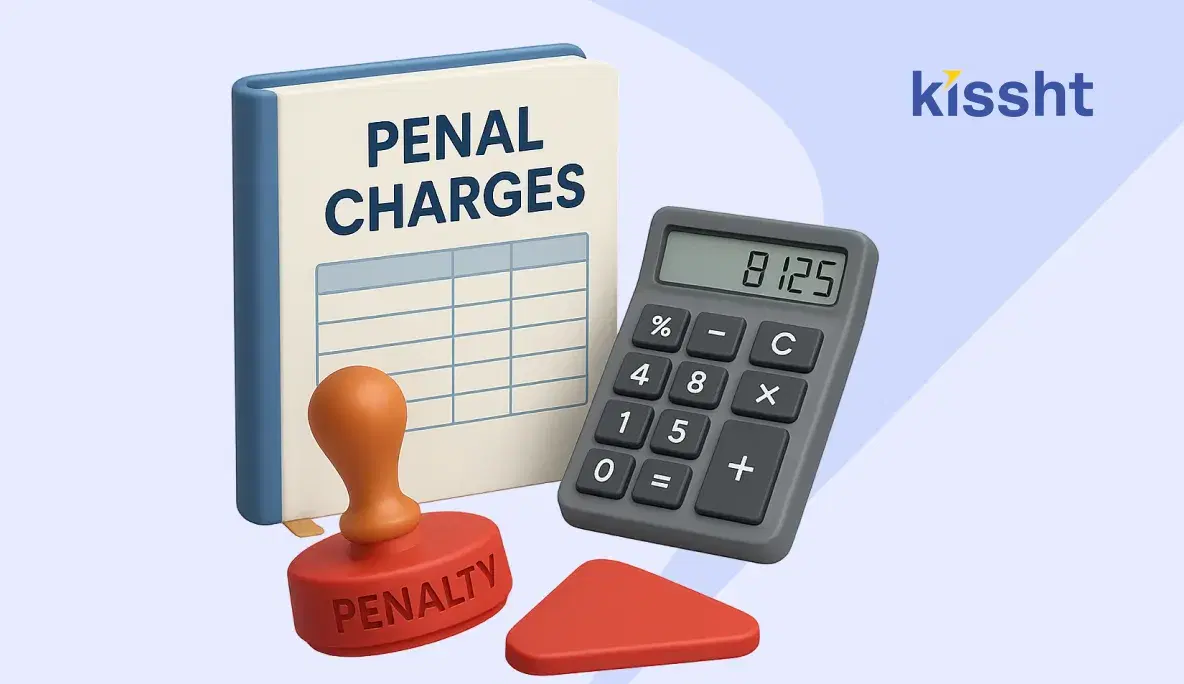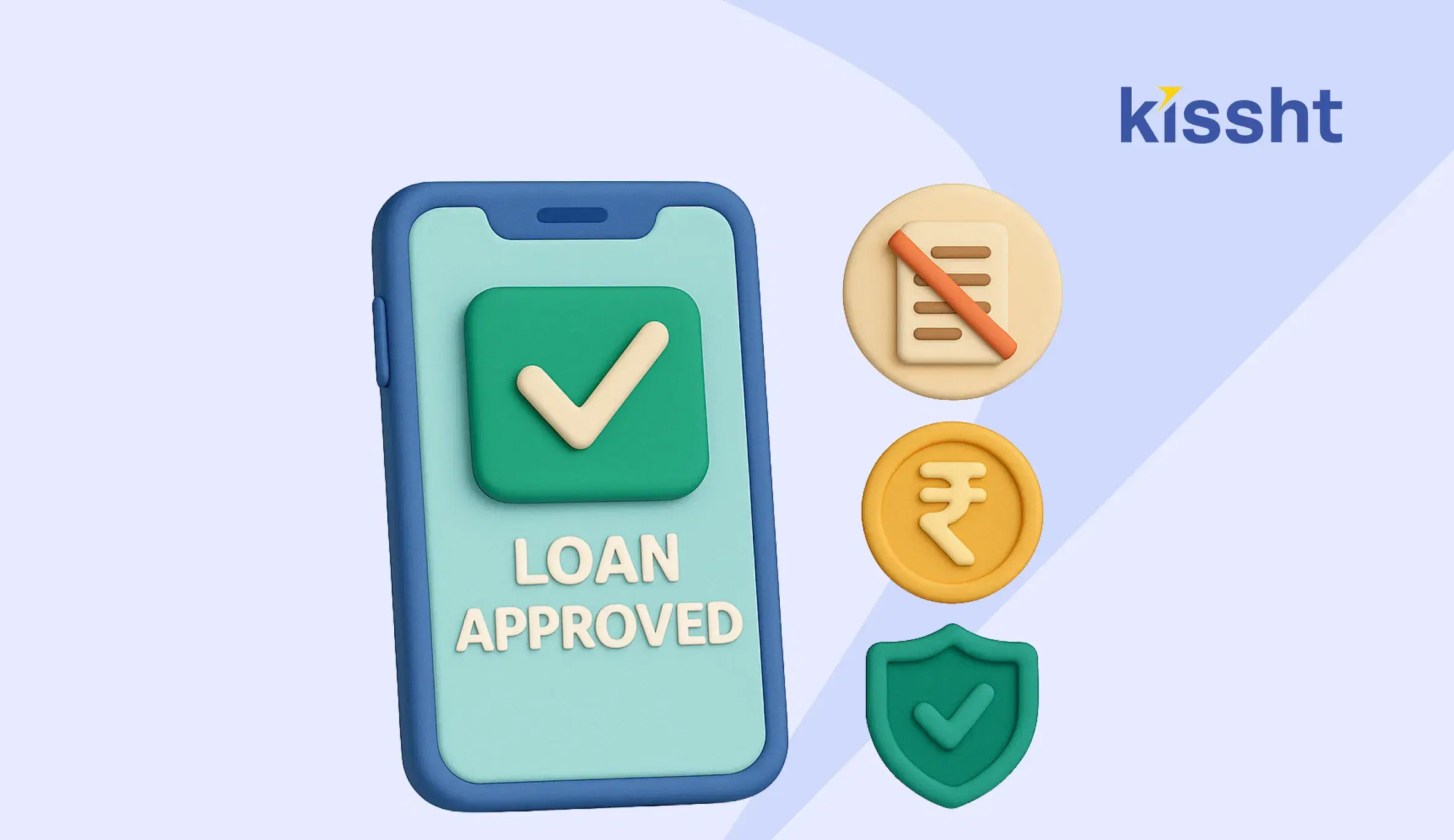What Is Penal Charge? How Is It Calculated?

When borrowers delay EMI payments, lenders impose a small extra cost called a penal charge. It is not just a late fee; it’s a structured amount meant to cover the risk and administrative effort involved in managing overdue accounts. Most of us hear about it but very few rarely understand the details of what is penal charges or how these costs are calculated.
Knowing how this works helps borrowers avoid unnecessary expense and maintain good financial discipline.
Understanding Penal Charges Meaning
The penal charges meaning is straightforward; it’s an additional sum levied by the lender when a payment isn’t made on time. It applies to EMIs, credit card dues, or any other loan where instalments are delayed.
- These are separate from normal interest.
- They are charged only for missed or delayed payments.
- They’re meant to encourage timely repayment and compensate the lender for administrative costs.
Banks and fintech companies are transparent about this today. Many instant loan app platforms clearly mention what are penal charges in their product details so users understand possible extra costs before signing a loan agreement.
For digital borrowers, these charges may also appear under penal charges in loan accounts, especially when using services that manage multiple active loans under one profile.
How Penal Charges Are Applied
The amount and method of applying penal charges differ by institution, but most lenders follow similar principles.
Here’s how the system usually works:
Based on Overdue Amount
- The penalty is charged on the delayed EMI, not the full outstanding loan.
Calculation Period
- The lender calculates daily, weekly, or monthly until the payment clears.
Rate of Charge
- Typically 1 % - 3 % of the overdue sum, depending on the loan provider.
Disclosure Requirement
- RBI rules require full transparency in loan documentation.
Borrowers using instant loan online platforms can review all this under “repayment terms” or “fee structure.” Understanding what is penal charges in advance avoids disputes later.
Penal Charges in Loan Accounts: Key Points
Penal charges in loan accounts can apply across all forms of borrowing; personal loan, business loan, or consumer finance.
- They’re triggered by delays beyond the grace period.
- They’re automatically reflected in monthly statements.
- Some lenders combine them with what is penal interest (an extra rate on overdue sums).
- Others apply only fixed fees.
Fintech lenders have modernised this with reminders and grace-period alerts. An instant loan app may send automated notifications before the penalty starts, giving borrowers a chance to avoid it.
What Is Penal Interest and How It Differs
Borrowers often mix up what is penal interest and penal charges. Though both relate to missed payments, they aren’t identical.
Penal interest: an extra interest rate added to overdue amounts.
Penal charges: a separate fee or flat cost imposed for the delay itself.
Some lenders apply both together; others only one. A responsible loan provider will explain this clearly in your agreement.
Why Lenders Levy Penal Charges
The reason for charging penalties isn’t just revenue. It serves several practical functions:
- Offsets the cost of tracking and managing overdue accounts.
- Encourages prompt repayments to maintain cash flow.
- Deters chronic delays that can lead to defaults.
- Signals credit bureaus about repayment discipline.
Digital lenders offering instant loan online services usually calculate these automatically within the app. Borrowers can see penalty breakdowns in their repayment history. Repeated delays can add up over the loan tenure. That’s why understanding what are penal charges is essential before borrowing.
How to Avoid Penal Charges
Borrowers can avoid these additional costs with basic financial discipline:
- Set auto-debit instructions for EMIs.
- Maintain adequate balance before due dates.
- Respond quickly to lender reminders.
- Contact your loan provider early if hardship arises; many can reschedule payments or offer short deferments.
- Track all notifications if using an instant loan app.
- Preventing a single penalty protects not only your pocket but also your credit history.
Why Knowing About Penal Charges Matters
Understanding penal charges meaning and the structure of penal charges in loan accounts empowers borrowers to manage credit responsibly. It also clarifies how what is penal charges differs from what is penal interest, both of which affect the cost of borrowing.
Transparent lenders ensure customers know what are penal charges, when they apply, and how they’re calculated. Awareness of these elements can save money and preserve your financial reputation.
FAQs
What are penal charges on loans?
They are additional fees a lender charges when payments are delayed beyond the due date, calculated on the overdue amount.
How are penal charges calculated?
The lender applies a fixed rate or percentage to the delayed EMI, for the number of days overdue.
Are penal charges and penal interest the same?
No. Penal interest is extra interest on overdue amounts; penal charges are separate fees for delay.

Instant Loans at Your Fingertips
Personal Loan
Fast, hassle-free loan for your personal needs.

Business Loan
Fuel your business growth with quick approvals.

Loan Against Property
Unlock your property’s value with ease.

Credit Pulse
Boost your credit score with smart insights.

Track your credit score
Simply enter your mobile number to get a quick overview of your credit score.
Check Now
Related articles

Nov 19, 2025
How Digital Lending Is Changing Borrowing in Tier-2 & Tier-3 Cities

Oct 25, 2025
Loan Settlement Explained: Meaning, Process, and Benefits

Oct 07, 2025
NOC Full Form: What is Loan NOC & Why It’s Important

Oct 07, 2025
What is EMI? Meaning, Full Form & How It Works

Oct 07, 2025
What is an MSME Loan? Everything You Need to Know

Sept 08, 2025
Best Safe Loan App for Instant Personal Loans in India

Sept 05, 2025
List of Profitable Food Business Ideas to Start in India

Aug 08, 2025
Personal Loan vs. Credit Card Loan: Which One Should You Choose?

Sept 07,2025
Loan for Home Renovation: Everything You Need to Know

Sept 07,2025
Secured vs. Unsecured Loan: Key Differences You Should Know

January 7, 2025
How to Get a Personal Loan

February 29, 2024
